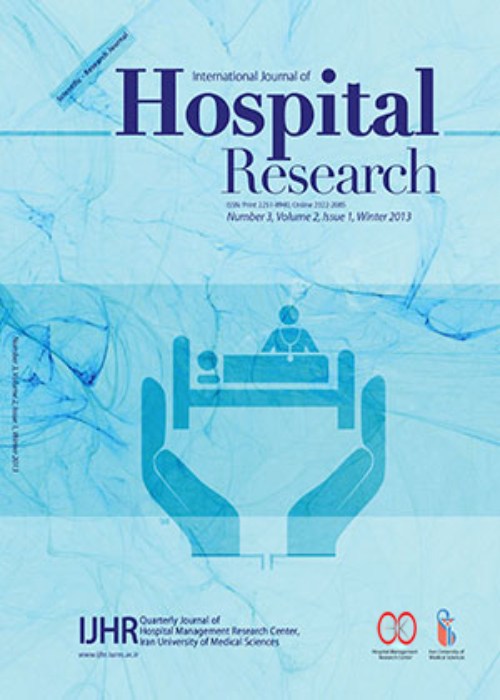Nursing Time Allocation: A Wok Sampling Survey in a Turkish Private Hospital
Author(s):
Abstract:
Background And Objectives
Work sampling is a useful technique to characterize how employees allocate their work time to various activities. Given the value of nurses time for quality health care delivery, characterization of nursing time distribution may provide useful information for optimal use of nursing staff. The purpose of the present study was to explore time allocation by nurses using work sampling method.Method
The study was conducted in a 150-bed private hospital. Data was collected using a researcher-designed work-sampling tool addressing 259 tasks grouped into four high-level activities, including direct care, indirect care, and unit-related, and personal activities. By conducting a pilot study, a sample size of 669 was determined for observation. In practice, however, a total of 228 nurses were observed in 540 shifts, which provided a robust sample for data analysis. Data were collected at 2030 minute intervals over a nine-week period. The nurses activities were randomly observed and recorded by 12 trained observers.Findings: A total of 17517 nursing activities were observed for the day shifts and 12902 for the night shifts. The nurses were found to spend 4446% of their work time on direct care, 2022% on indirect care, 1014% on unit-related duties, and 2024 % on the personal activities, depending on shift time. The proportion of nursing time specified to direct patient care was the highest in the Emergency Department (55%, day shift, 57%, nigh shift) and the lowest in Maternity Ward (35%, day shift, 32%, night shift). Administration of medication (28.7%, day shift, 28.4%, day shift) and monitoring patients vital signs (25.6%, day shift, 26.7, night shift) were identified as the most time-intensive patient care tasks. The nursing time distribution was virtually the same in the day and night shifts. The proportion of time spent on personal issued (22%, day shift, 25%, night shift) was found to be higher than that required by the hospital.
Conclusions
While the nursing staff spends the majority of work time on direct patient care, the time spent on personal activities is relatively high, requiring specific inspection. Our results identify the most time-intensive nursing tasks and provide potentially useful data for optimal design of nursing schedule. Keywords:
Language:
English
Published:
International Journal of Hospital Research, Volume:5 Issue: 2, Spring 2016
Pages:
58 to 63
magiran.com/p1673439
دانلود و مطالعه متن این مقاله با یکی از روشهای زیر امکان پذیر است:
اشتراک شخصی
با عضویت و پرداخت آنلاین حق اشتراک یکساله به مبلغ 1,390,000ريال میتوانید 70 عنوان مطلب دانلود کنید!
اشتراک سازمانی
به کتابخانه دانشگاه یا محل کار خود پیشنهاد کنید تا اشتراک سازمانی این پایگاه را برای دسترسی نامحدود همه کاربران به متن مطالب تهیه نمایند!
توجه!
- حق عضویت دریافتی صرف حمایت از نشریات عضو و نگهداری، تکمیل و توسعه مگیران میشود.
- پرداخت حق اشتراک و دانلود مقالات اجازه بازنشر آن در سایر رسانههای چاپی و دیجیتال را به کاربر نمیدهد.
In order to view content subscription is required
Personal subscription
Subscribe magiran.com for 70 € euros via PayPal and download 70 articles during a year.
Organization subscription
Please contact us to subscribe your university or library for unlimited access!


